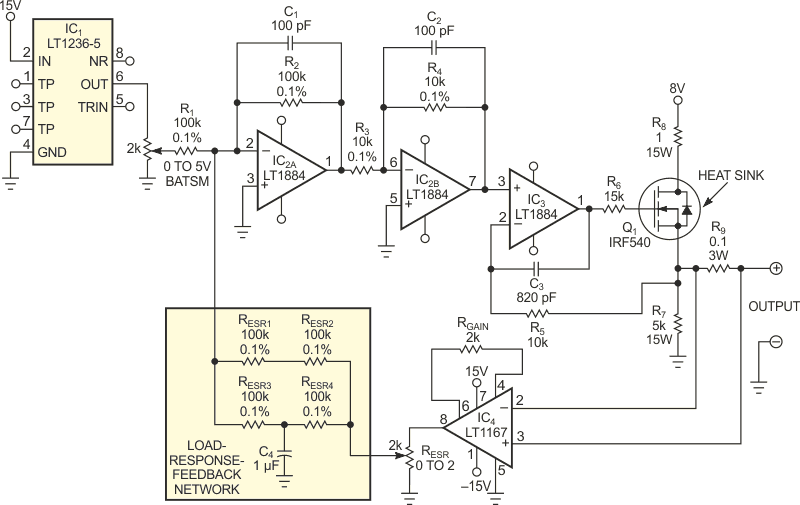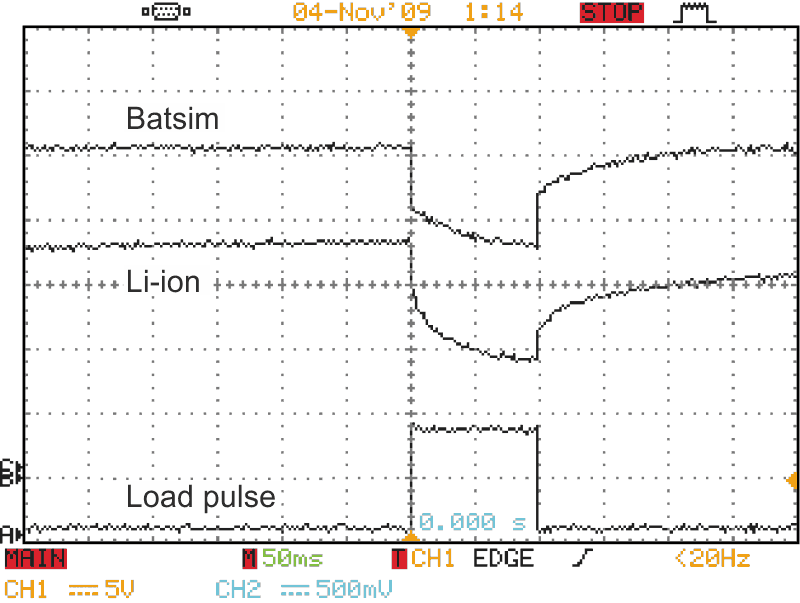You may lack experience and hardware when designing battery-operated products. The battery life of a product can depend more on the ESR (equivalent series resistance) than the terminal voltage. This situation is especially true when you use switching regulators to boost the battery voltage. The switching regulator creates a higher load as the battery voltage decreases. The ESR of a real battery is not constant. When you remove a battery load, it reacts and “heals” as its ions rediffuse. Portable electronics may include a low-power or a sleep mode. The device takes short high-power pulses from the battery.
The battery simulator in this Design Idea duplicates a battery’s ESR-response curve. If you place different values in the feedback network, you can obtain various ESR curves. The circuit simulates most battery types, including lithium ion and alkaline. It supplies 0.5 to 4.2 V at several amperes to the device under test, and it can simulate the ESR of a variety of battery types. You can change the delay to the final value of ESR by setting the ESR potentiometer. Some battery types exhibit this unique characteristic. It has a large influence on the delivery of pulsed current to a load.
In the circuit, IC1 supplies a stable voltage, setting the unloaded output voltage (Figure 1). IC2 provides the necessary inversions for the ESR function. IC3 and Q1 form a power-output stage that receives a voltage of 8 V. Resistor R8 limits the power. IC4 senses the output current through R9 and provides a gain of 20. This signal goes to the ESR timing circuit, providing both the ESR effect and the response timing.
 |
|
| Figure 1. | This simulator circuit represents the load response of many battery types. |
You can simulate battery chemistries and sizes by varying the component values. If you omit C4 and replace RESR1 through RESR4 with one 100-kΩ resistor, only the basic ESR function results. Figure 1 omits power and bypass capacitors.
 |
|
| Figure 2. | With no feedback capacitor, the simulator closely matches the response of a large lithium-ion battery. |
Applying a 1 A load pulse without the capacitor in the feedback network causes the simulator response to closely follow the response of a 2000-mA•hr lithium-ion 18650 battery (Figure 2). You can also add the capacitor to the feedback network to make the simulator better represent the response of a small, 200-mA•hr lithium-ion battery (Figure 3). With proper adjustment of the circuit, you can produce many response curves.
 |
|
| Figure 3. | Adding capactive feedback causes the simulator to act like a much smaller battery. |